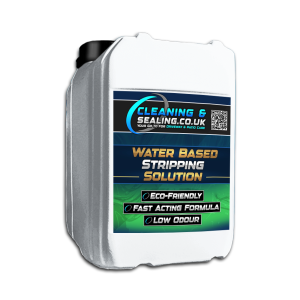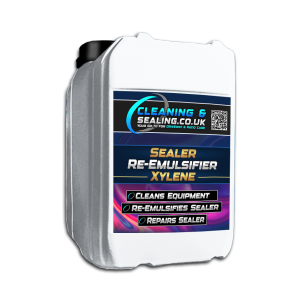Failed Sealer - Imprinted Concrete
How to Remove Failed or Unwanted Sealer from Pattern Imprinted Concrete
You might want to call a trained applicator now! Removing failed or wrong sealers is tough, messy, and time-consuming.
If you don’t feel confident or lack the tools, it’s better to leave this job to a professional.
Sealing protects and improves your concrete, but using the wrong product or poor application can ruin the look completely.
You may see flaking, cloudy white marks (called blooming), or patchy colour if the sealer fails.
These problems not only look bad but also weaken the concrete’s protection against dirt, water, and wear.
The good news is: with the right tools and cleaner, you can remove the failed sealer and prep the surface properly.
What Causes Sealers to Fail on Stamped Concrete?
Sealers fail for a few common reasons, most of which come from the wrong product or poor application steps:
- Wrong sealer used – Applying water-based sealer over solvent-based can cause peeling and weak bonding.
- Bad weather during application – Cold, damp, or humid conditions trap moisture and cause a cloudy or milky finish.
- Too much product applied – Heavy coats or back-to-back layers make the surface sticky and uneven, trapping dirt.
- Dirty surface underneath – Not cleaning properly first means old stains, oils, or sealers block proper bonding.
How to Remove a Failed or Wrong Sealer the Right Way
You must strip off the old sealer fully before applying a new one. Skipping this step risks another sealer failure.
A clean base helps the new sealer bond correctly and gives you a smoother, stronger result.
Why You Need a Specialist Sealer Remover
General strippers for paint or varnish don’t work well on stamped concrete and often damage the colour or pattern.
Instead, choose a sealer remover made for imprinted concrete. It will:
✔ Break down and remove flaking, milky, or sticky sealers safely.
✔ Protect the stamped pattern and keep the colours looking fresh.
✔ Leave a clean surface ready for new sealer with no leftover film or residue.
How to Avoid Sealer Problems in the Future
After stripping the failed sealer, follow these tips to apply your new sealer properly:
✅ Let the surface dry fully before sealing—no moisture should be trapped underneath.
✅ Choose a compatible sealer made for stamped concrete.
✅ Wait for dry, mild weather—avoid sealing during damp, cold, or humid conditions.
✅ Apply thin, even coats to stop pooling, patchiness, or sticky areas.
Why Choose a Specialist Sealer Remover?
Many general cleaners or solvents can cause more harm than good. They might:
❌ Fade colours or damage stamped textures
❌ Roughen the surface and blur pattern details
❌ Leave residue that stops new sealers from bonding properly
Our specialist remover solves these problems by:
✔ Lifting failed sealers without harming your concrete or colours
✔ Leaving no chemical traces that affect resealing
✔ Saving you time by making the job cleaner, faster, and more reliable
If your stamped concrete looks patchy, flaky, or milky, it’s time to fix the sealer problem properly.
Removing the failed product with the right remover will help your next sealer do its job properly. With the right method and product, your concrete will stay clean, strong, and sharp-looking for years to come.
Showing all 2 results
-

Stripping Solution
£73.99 Add to basket -

Xylene Solvent
Price range: £29.99 through £113.99 Select options This product has multiple variants. The options may be chosen on the product page
